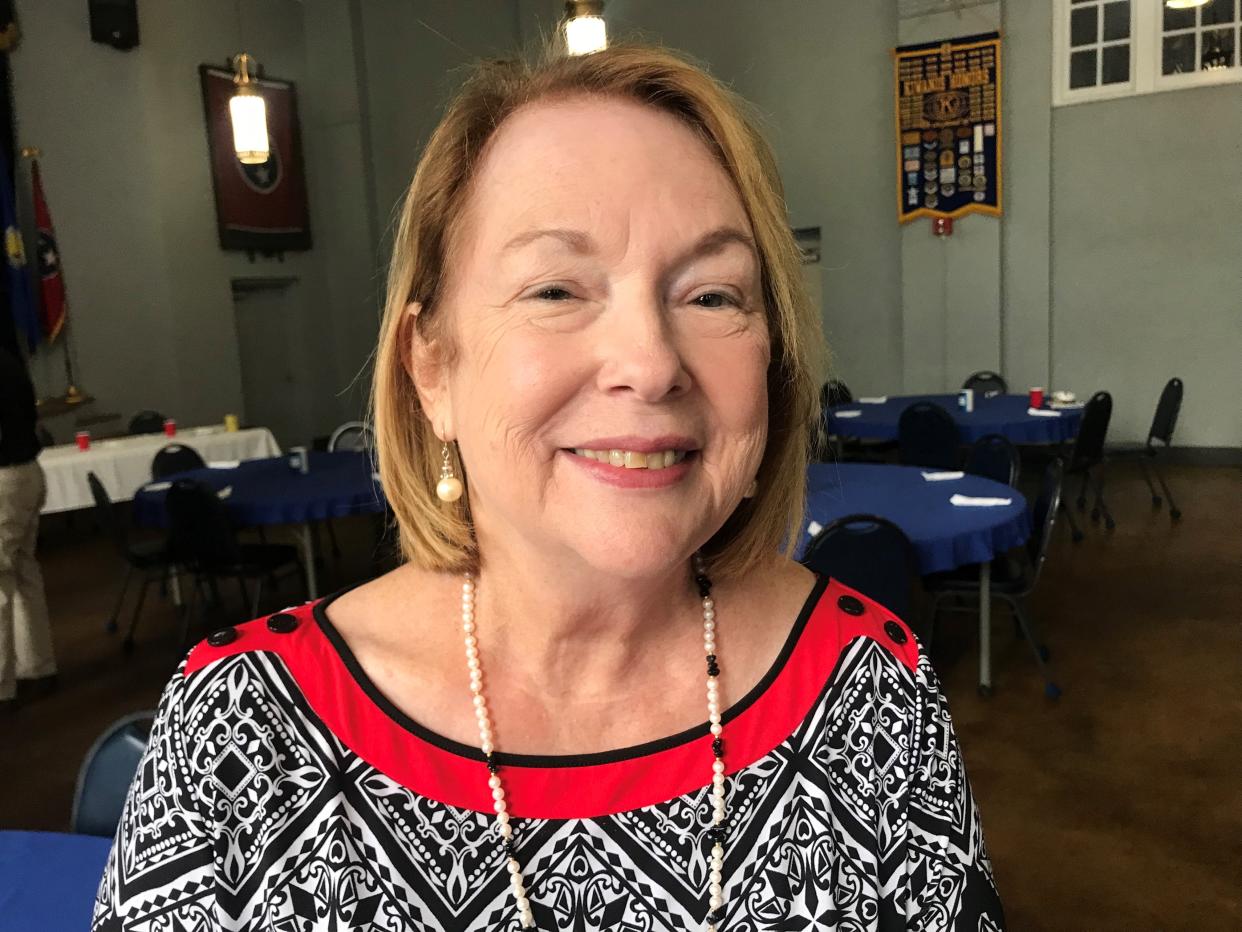Sheila Hickman: A bit of history on Maury County courthouses from 1807-1907

Author’s Note: The information in this article was taken from Century Review of Maury County, Tennessee 1807-1907 published by the County Mayor and History of Maury County, Tennessee, by Judge William Bruce Turner and her general knowledge of our county.
Maury County’s Quarterly Court first met in Joseph Brown’s log cabin on Dec. 21, 1807.
Some sources mention a log courthouse on the east side of the public square. According to Nathan Vaught, our master builder, “We were taken to a shanty of a courthouse on the public square in the midst … of large trees cut down … and brush scattered in every direction.”
Court minutes show that the building was so unsuitable that court met in a large log house on the east side of Glade Street and in private homes. Alfred Horsley, editor of the Columbia Herald, wrote that no house in Columbia was suitable to keep public records.
However, the records were kept by a Mr. Porter.
The 1810 building, sometimes called the first brick courthouse, was quite an improvement over the log cabins.
It had a shingled roof, a cupola, porticos on the north and south and four hexagonal columns three feet thick.
The color scheme seems unusual with white walls, jet black columns, tea green walls, dark mahogany doors, and bright blue mantels. The outside walls were later painted yellow. The yard was enclosed by dressed cedar railings. That handsome building, costing $6,900, must have created feelings of accomplishment for those who were living on the western frontier.
In January 1844, magistrates were given the task of building a new courthouse. The appropriation for the building was $15,000. Nimrod Porter received the contract. Additional changes in the building increased the cost to $19,170. This brick structure was 49 x 86 feet, three stories high with a brick sidewalk around the building. There was space for circuit and chancery court rooms and county offices.
'Shabbiest' in Tennessee to newest
By 1898, the newspaper reported that Maury County had the shabbiest courthouse in Tennessee.
A new courthouse had been discussed for 20 years. A group of lawyers and civic minded citizens began a campaign to replace that old building. Records show that there was much discussion about building a new courthouse.
Construction was delayed by a 1904 lawsuit by an opposing magistrate who claimed that the Maury County Quarterly Court was not a legal entity. Maury County Court was declared a legal body by the Supreme Court.
An agreement was reached, and the old building was sold for $1,000 dollars. After deconstructing the building, the buyer made a considerable profit, and the brick was used to build a new residence on West Seventh.
Architects for the new courthouse were Carpenter and Blair of New York, and J. E. R. Carpenter was originally from Columbia.
The cornerstone was laid on October 8, 1904, with great ceremony. Not only was there a committee for building the courthouse, there was also a county court committee in charge of laying the cornerstone.
There is an expansive list of the items placed there ranging from colonial coins, Union and Confederate cartridges from the previous courthouse, stamps, silver dollars, books, various publications, and a fish scale from a 160 pound fish caught at Bear Creek. (The cornerstone was removed and opened by Bob Duncan and other historians. Alas, the contents were a soggy blog. The cornerstone had not been properly sealed.)
The program began at 3 p.m., and it was under the directions of Columbia Lodge Number 31, Ancient Free and Accepted Masons. The masons with their aprons and colorful jewels of office used their ancient rituals to bless and dedicate the building.
Uncle Dick Porter, a former slave was allowed to place the first trowel of mortar. He remembered assisting in building the previous courthouses and was a beloved figure in this community;
Hugger Brothers of Montgomery, Alabama, won the contract for building for $83,000. Forster-Herbert Stone Company of Nashville did the stone work. Southern Foundry of Owensboro, Kentucky, furnished the steel.
The courthouse is 85 x 108 feet with three stories and a basement. The basement held a boiler room, closets, and storage.
(Until Bob Duncan moved all the records to the Archives in 2001, these records from the very first days of our county were in real danger from dampness and decay.)
The outside is white Indiana limestone with much ornamentation in the Neoclassic style. The four sets of doors open to the four main streets in downtown. The stairs are of iron and marble, now worn smooth by countless steps since 1906. The floors are tile laid in concrete and marble.
The elaborate interior was designed to reflect the prosperity of Maury County. The first floor contained the county court room, offices for the sheriff, register, trustee, clerk, and judge. The second floor had the circuit court room, two witness rooms, and judge, clerk and master, and circuit clerk rooms.
The third floor held chancery court rooms, judge and clerk rooms, attorney general jury and grand jury rooms.
The original appropriation of $100,000 included funds for furnishings and changes in the plans. According to the Century Review, “It is, however a much needed improvement, well worth its cost to the county and will probably remain for centuries as a monument to its promoters.”
The clock tower is 132 feet above the street. Its striking can be heard throughout downtown and even in Riverside.
The clock is a reminder that Maury County continues to benefit from the wisdom of our predecessors and an admonition that we too should prepare for those who come after us.
Sheila Hickman is a product of the Maury County Schools. She has a Bachelor’s degree in English from Lipscomb and a Master’s from Peabody Vanderbilt. She returned to teach English at Columbia Central High School, her alma mater.
This article originally appeared on The Daily Herald: Sheila Hickman:

